The kick-off meeting of LSMOMEMS took place in the GREYC lab at ENSICAEN on 15-16 May 2023. This 2-years project of cooperation IEA 2022 between CNRS-GREYC and CNR-SPIN aims developing oxide-based MEMS resonators for infrared detection. The project is coordinated by Dr. Laurence Méchin (CNRS-GREYC, Caen) and Dr. Nicola Manca (CNR-SPIN, Genova).
The objective of LSMOMEMS is to study the principle of operation of infrared bolometers making use of MEMS resonators (i.e. MEMS bolometers) fabricated with epitaxial oxide thin films. The long-term goal of LSMOMEMS is to demonstrate the potential of bolometers made of (La,Sr)MnO3 in relevant technological applications, such as Non Dispersive InfraRed (NDIR) gas sensors, IR spectroscopic sensing or imaging devices.
This project will further develop the technology of complex oxides micromechanics by combining the expertise on micro-fabrication and thermo-mechanical characterization of the two research units. LSMOMEMS will work on two research directions: the development of full-oxide MEMS systems made from epitaxial oxide heterostructures and the integration of complex oxides with silicon MEMS technology. Exchange activities of researchers and students will allow developing a shared framework for performance analysis and fabrication protocols. LSMO-based MEMS are currently under development within the OXiNEMS project.
Nicola Manca had also the opportunity to present the OXiNEMS project to CNRS-GREYC members.
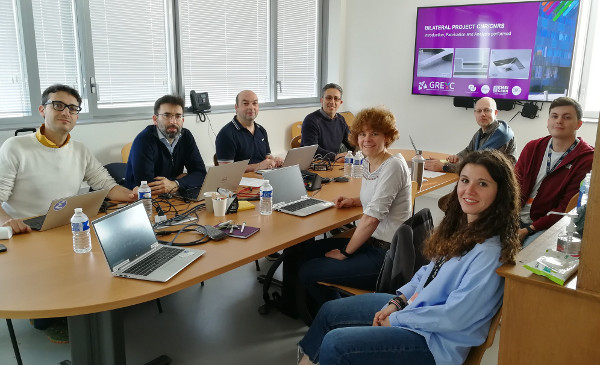
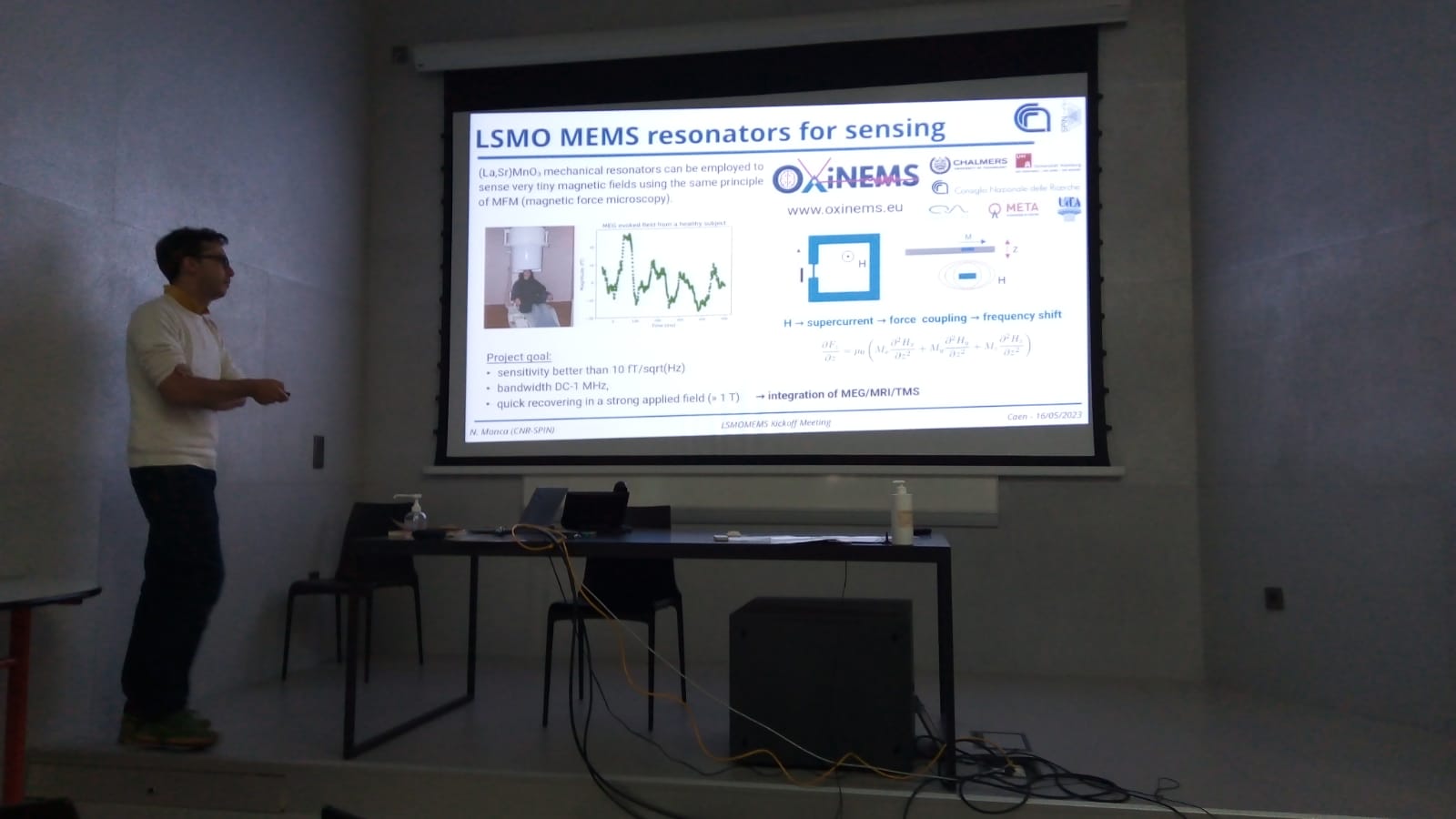


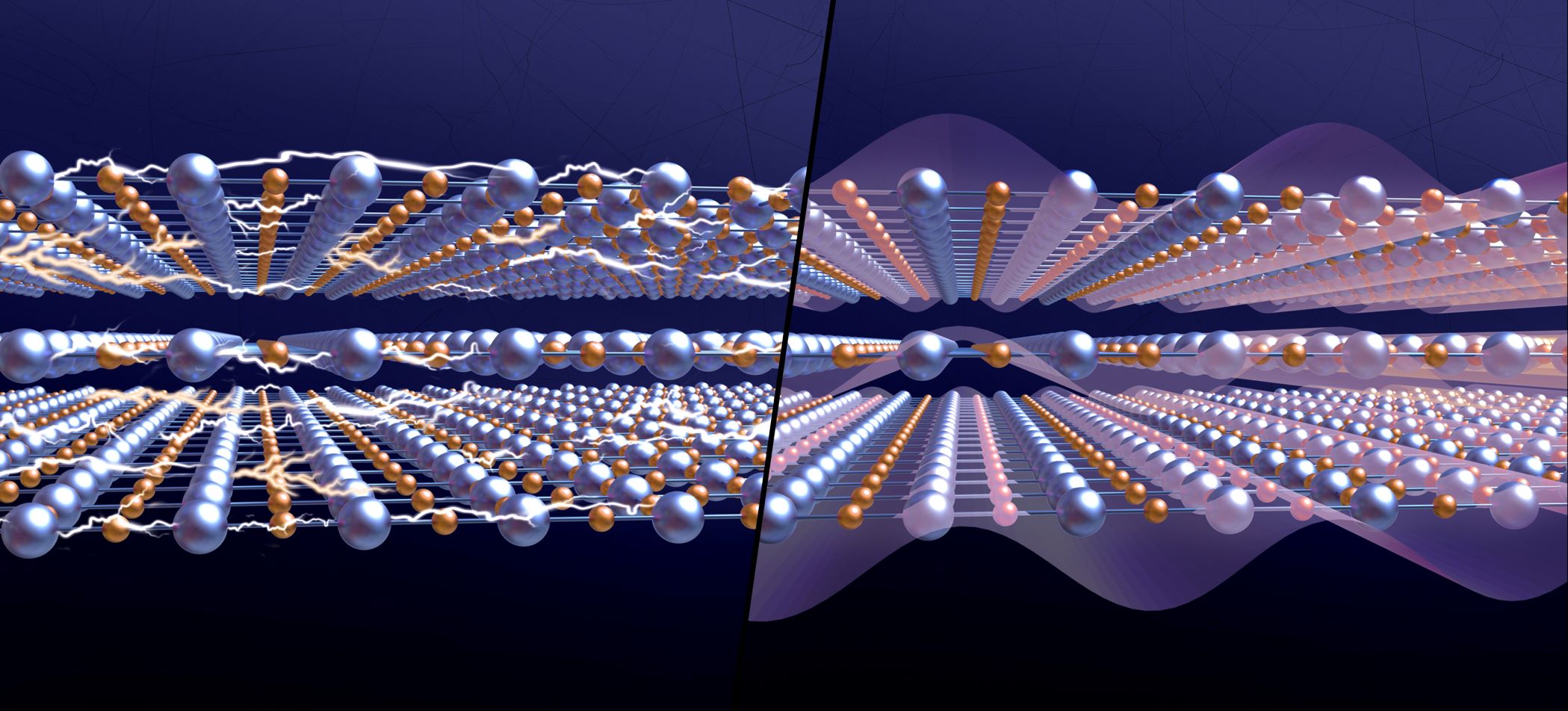
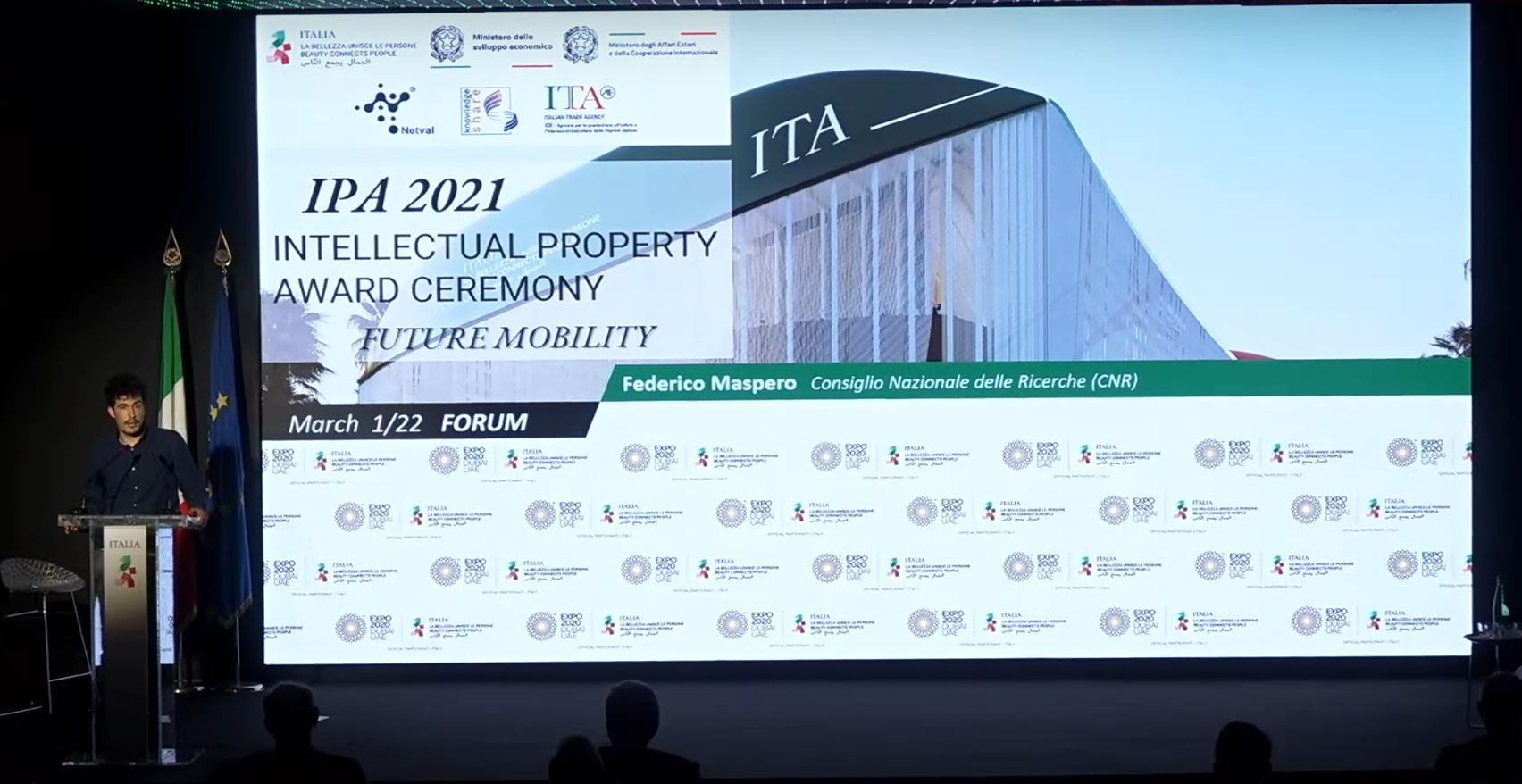
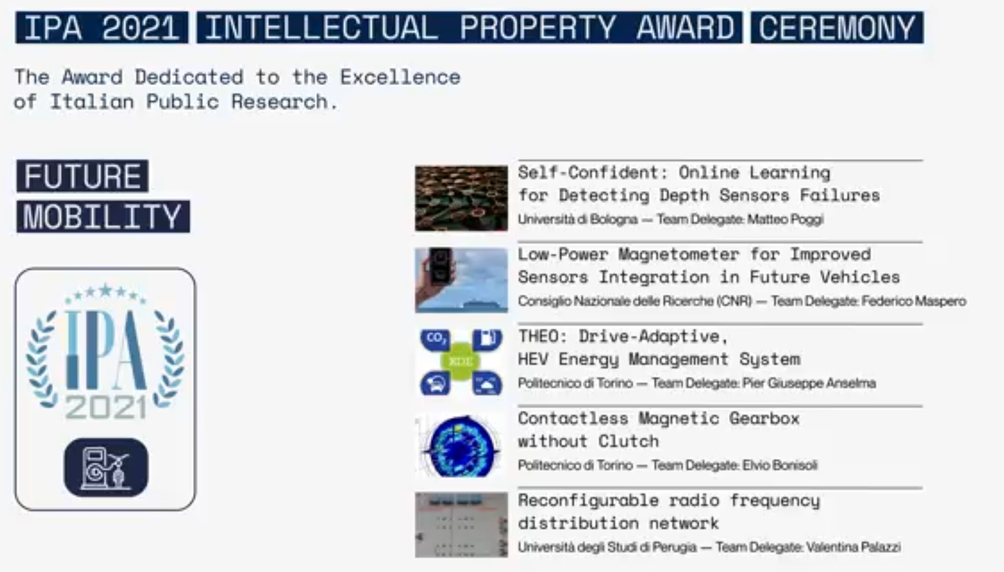

 This project has received funding from the European Union’s Horizon 2020 research and innovation programme under grant agreement N.828784.
This project has received funding from the European Union’s Horizon 2020 research and innovation programme under grant agreement N.828784.